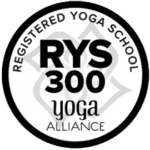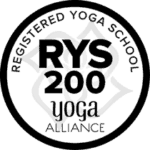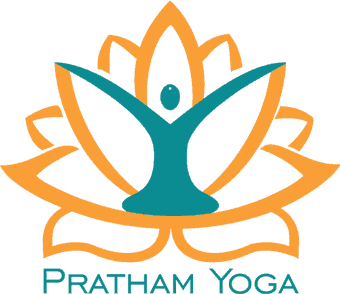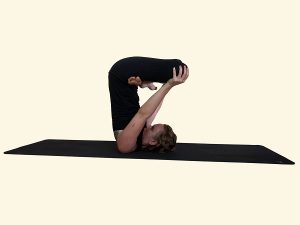Step-by-Step Urdhva Padmasana: Find Your Balance & Bliss
Starting your journey in yoga opens the door to inner peace, strength, and balance. Among the many poses, Urdhva Padmasana, or the Upward Lotus Pose, stands out as a beacon of harmony and happiness. This guide is your step-by-step companion to mastering Urdhva Padmasana, designed to guide you safely and enrich you through this advanced pose. Whether you’re a yoga veteran or just starting, the transformative power of Urdhva Padmasana is ready to take your practice to new heights.
Learn how to unite your body, mind, and spirit, unfolding your potential in this empowering pose. Let’s start this journey together, finding balance and bliss through the beauty of Urdhva Padmasana.
Urdhva Padmasana: A Timeless Journey to Balance and Inner Peace
Urdhva Padmasana, also known as the Upward Lotus Pose, has a long and fascinating history that goes back hundreds of years in the world of yoga. This special pose is like the lotus flower, which grows in muddy water but blooms beautifully above the surface. It’s been a key part of yoga because it helps people find balance, clear their minds, and grow spiritually.
Long ago, yogis used it to meditate better and connect with their deeper selves. Through the years, while yoga has changed and grown, the core idea of Urdhva Padmasana staying a powerful pose for inner peace and discovery hasn’t changed. It shows us the timeless magic of yoga in bringing people together on their journey to feeling good inside and out.
Mastering Urdhva Padmasana: A Comprehensive Step-by-Step Guide
Preparation Stage
Begin by finding a comfortable seated position on your yoga mat with your legs stretched out in front of you. This initial posture is called Dandasana or Staff Pose. Sit tall, breathe deeply, and let your body relax as you prepare for the pose.
Entering the Lotus Position
Carefully bend your right knee, lifting your right foot and placing it on your left thigh, close to the hip. The sole should face upward, and the heel should be as close to the abdomen as possible.
Repeat the same process with your left leg, placing your left foot on your right thigh. This is the Lotus Pose or Padmasana. If you find this challenging, it’s okay to start with a simpler cross-legged position. The goal is to gradually increase your flexibility.
Hand Placement for Lift
Place your palms flat on the ground beside your hips, ensuring your fingers are pointing towards your feet. Your arms should be straight and strong, ready to lift your body.
The Lift Off
With a firm press into your palms, engage your core muscles and gently lift your entire lower body off the ground. This includes lifting your crossed legs by using the strength of your arm and abdominal muscles.
It’s normal to find this part challenging at first. You might only lift a few inches or not at all, but with practice, your strength will improve.
Balancing Act
Once you manage to lift off, focus on finding your balance. It’s not just about physical strength but also mental concentration. Keep your spine straight, your gaze forward, and your breathing steady.
Hold this position for a few breaths, or as long as feels comfortable. With each practice, you’ll be able to hold it longer.
Graceful Descent
Carefully and slowly lower yourself back to the starting position. It’s important to control your descent to avoid any sudden movements that might cause strain.
Unlocking the Multifaceted Benefits of Urdhva Padmasana
Elevates Focus and Enhances Concentration
The act of balancing in Urdhva Padmasana demands unwavering attention and mental clarity. This intense focus spills over into daily life, sharpening your concentration and boosting productivity.
Strengthens the Core Muscles
The core is the cornerstone of Urdhva Padmasana. As you lift and sustain your body in the air, your abdominal muscles are engaged and strengthened. A strong core contributes to better posture, reduces back pain, and enhances overall athletic performance.
Improves Digestive Function
The unique positioning of the legs and the gentle pressure on the abdomen during this pose stimulate the digestive organs. This stimulation aids in improving digestion, encouraging the efficient processing and elimination of waste, and can alleviate common digestive issues.
Boosts Balance and Stability
Regular practice of Urdhva Padmasana trains your body to find equilibrium, enhancing physical balance and stability. This improved balance is beneficial not just for executing complex yoga poses but also for everyday activities, reducing the risk of falls and injuries.
Stimulates Blood Circulation
The inverted nature of this pose, with the heart elevated above the head, encourages blood to flow more easily to the brain and upper body. Enhanced circulation can lead to improved brain function, heightened mental alertness, and increased energy levels.
Promotes Respiratory Efficiency
By opening up the chest and encouraging deep, mindful breathing, Urdhva Padmasana can improve lung capacity and respiratory efficiency. This is particularly beneficial for those looking to enhance their breathing techniques in yoga or seeking to improve overall respiratory health.
Encourages Emotional Balance and Stress Relief
The concentration required to maintain Urdhva Padmasana allows for a meditative focus that can lead to profound inner peace. This meditative state helps in reducing stress, anxiety, and can promote a deep sense of emotional well-being.
Fosters Flexibility and Opens Hips
The Lotus position component of the pose works wonders in increasing flexibility, particularly in the hips and legs. Regular practice can help in alleviating stiffness and promoting mobility in these areas.
Pratham Yoga: Your Gateway to Mastering Yoga in Rishikesh
Dive into the heart of yoga with Pratham Yoga’s 200 Hour Yoga TTC in Rishikesh, hailed as one of the Best 200 Hour Yoga TTC India has to offer. Nestled in the serene landscapes of Rishikesh, our 200 Hours Yoga Teacher Training Rishikesh program is meticulously designed for aspiring yogis seeking a profound understanding of yoga’s essence. As you embark on this transformative journey, Pratham Yoga ensures a blend of traditional practices and contemporary teaching methodologies.
Beyond the 200-hour certification, for those looking to delve deeper, our 300 Hour Yoga Teacher Training in Rishikesh expands your knowledge and skills to new heights. Join Pratham Yoga in the spiritual epicenter of the world, and take the first step towards becoming a globally recognized yoga teacher.
As you wrap up your journey through the serene and empowering steps of Urdhva Padmasana with Pratham Yoga, remember that finding balance and bliss in yoga is a continual path, not a destination. Through the guidance provided in this article, you’re now better equipped to integrate this profound pose into your practice, elevating both your physical and spiritual well-being.
At Pratham Yoga, we’re dedicated to supporting your journey toward inner peace and mastery in yoga. May your practice of Urdhva Padmasana bring you closer to the harmony and serenity you seek. Keep exploring, keep growing, and let the tranquility of yoga infuse every aspect of your life.



